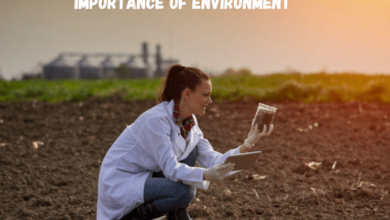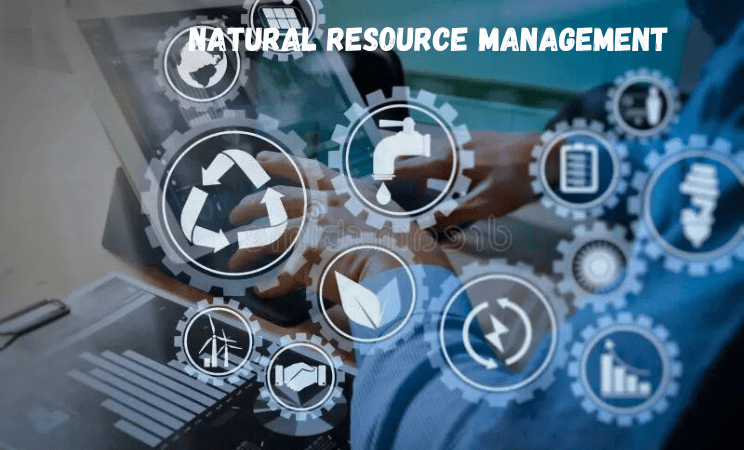
Green Initiatives: In our rapidly changing world, the quest for sustainability has never been more crucial. This journey towards a greener, cleaner, and more equitable future is propelled by a multitude of innovative green initiatives. These efforts encompass sustainable energy, eco-friendly transportation, green agriculture, waste reduction, biodiversity conservation, and environmentally conscious architecture. Together with supportive policies and individual advocacy, they hold the promise of a better tomorrow. With each step taken in the direction of sustainable living, we contribute to healing our planet and securing a more prosperous, harmonious, and eco-conscious future for generations to come.
The Urgency of Green Initiatives
The urgency of green initiatives cannot be overstated in our world today. Climate change, pollution, and resource depletion are pushing our planet to the brink. Extreme weather events, rising sea levels, and ecological imbalances are stark reminders of this impending crisis. But within this urgency, there lies an unparalleled opportunity for transformative change. Green initiatives are not just a choice; they are a necessity. They offer the lifeline for mitigating environmental damage, reducing carbon emissions, and preserving our fragile ecosystems. These initiatives are not limited to a specific sector; they encompass energy, transportation, agriculture, waste management, and beyond. Every action we take to adopt and support green initiatives is a step towards a sustainable, resilient, and harmonious future for all life on Earth.
Sustainable Energy Innovations
In a world at the precipice of an environmental crisis, sustainable energy innovations stand as beacons of hope and transformation. Fossil fuels, long the primary source of power, have brought us to a point of reckoning with climate change and resource depletion. However, a profound shift is underway, driven by innovative technologies harnessing renewable sources such as solar, wind, and hydropower. These innovations not only reduce carbon emissions but also offer energy independence and economic benefits. From cutting-edge solar panel designs to advanced wind turbines and grid integration solutions, the sustainable energy sector is flourishing. Embracing these innovations is our path to a cleaner, healthier planet and a brighter, more sustainable future for all.
Green Transportation Solutions
In a world increasingly conscious of its environmental footprint, the imperative for green transportation solutions is undeniable. Fueled by technological advancements and sustainability concerns, the transportation sector is undergoing a profound transformation. Electric vehicles (EVs), powered by clean energy sources, have become emblematic of this change, promising reduced emissions and a break from fossil fuel dependency. However, the revolution extends beyond EVs; innovative urban planning, public transportation upgrades, and the promotion of cycling and walking are reshaping the way we move within cities. These green transportation solutions not only mitigate air pollution and climate change but also offer healthier, more efficient, and equitable mobility options. Embracing these changes is not merely a choice; it’s a necessity to pave the way for a sustainable and vibrant future.
Sustainable Agriculture and Food Production
Sustainable agriculture and food production have become paramount in addressing the dual challenge of feeding a growing global population while preserving our fragile environment. Cutting-edge techniques and innovative practices are revolutionizing the way we grow, process, and consume food. Concepts such as vertical farming, aquaponics, and precision agriculture are maximizing resource efficiency, minimizing environmental impacts, and reducing food miles. Furthermore, the rise of plant-based alternatives and sustainable protein sources are changing our dietary habits and reducing the strain on natural ecosystems. By embracing these sustainable initiatives, we can enhance food security, promote biodiversity, and mitigate the carbon footprint of our food systems. These advances offer not only a path to a more sustainable future but also a healthier and more resilient world for all.
Waste Reduction and Recycling
Waste reduction and recycling are cornerstones of a sustainable future. We generate more waste as our global population grows. It’s imperative that we shift from a linear “take, make, dispose” model to a circular one where waste is minimized, resources are conserved, and pollution is reduced. Innovative technologies, such as waste-to-energy systems and advanced recycling methods, are transforming discarded materials into valuable resources. The circular economy concept promotes reusing, repurposing, and recycling products, significantly reducing environmental impact. By conscientiously managing our waste and embracing recycling practices, we not only conserve precious resources but also curtail pollution, mitigating the detrimental effects of our throwaway culture on our planet’s health and well-being.
Biodiversity Conservation
Biodiversity, the intricate web of life that sustains our planet, is under unprecedented threat. Human activities, such as deforestation, habitat destruction, pollution, and climate change, are causing alarming species extinctions and ecosystem degradation. Biodiversity, however, is not a mere luxury; it is fundamental to our well-being. It provides us with essential services, from clean air and water to food and medicine. Conservation efforts are pivotal in safeguarding this precious heritage.
Innovative approaches to biodiversity conservation, including rewilding, protected areas, and community-driven initiatives, are making a difference. These strategies aim to restore habitats, protect endangered species, and involve local communities in sustainable practices. Biodiversity conservation is not merely an environmental concern; it is a moral imperative and an investment in our shared future. As stewards of the Earth, we hold the power to reverse the tide of species loss and ensure the continued vibrancy and resilience of our planet’s ecosystems.
Green Building and Architecture
Green building and architecture stand as beacons of sustainable design and construction in a world grappling with environmental challenges. These practices prioritize energy efficiency, eco-friendly materials, and environmentally conscious design principles. By integrating technologies like solar panels, rainwater harvesting, and natural ventilation, they reduce energy consumption and minimize the carbon footprint of structures. Innovative buildings are emerging as models of sustainable living, providing comfortable and healthy spaces for occupants. Beyond the immediate benefits of lower energy bills and improved indoor air quality, green buildings play a pivotal role in combatting climate change, conserving resources, and promoting a more ecologically responsible way of life. They are the cornerstone of a greener, more sustainable future.
The Role of Policy and Advocacy
Policy and advocacy are twin pillars in the edifice of change. They form the backbone of any effective green initiative. Policies, enacted at local, national, and international levels, provide the framework for sustainable practices. They set standards, offer incentives, and regulate industries to ensure environmental responsibility. Advocacy, on the other hand, is the catalyst that drives these policies into being. Grassroots movements, nonprofit organizations, and dedicated individuals raise their voices for change, advocating for sustainable practices, awareness, and accountability. Together, policy and advocacy create a powerful synergy that can transform societies and industries, steering them towards a greener, more sustainable path. Through legislation, public pressure, and collective action, they shape our journey to a better, more eco-conscious world, one that ensures a healthier and more equitable future.
Conclusion
The world stands at a critical juncture, where the urgency of addressing environmental challenges through innovative green initiatives cannot be overstated. The remarkable strides made in sustainable energy, transportation, agriculture, waste reduction, biodiversity conservation, green architecture, and policy advocacy offer a glimmer of hope for a more sustainable future. These initiatives not only mitigate the environmental crisis but also pave the way for a more equitable and prosperous world. As we move forward, the choice is clear: embrace these unique green solutions or face the consequences of inaction. The time for change is now, and it is our responsibility to shape a better tomorrow for generations to come.
FAQs
The world stands at a critical juncture, What is renewable energy?
Renewable energy is derived from natural sources like the sun, wind, and water, producing clean power.
How can I reduce food waste?
Reduce food waste by planning meals, proper storage, and composting, minimizing environmental impact.
What is the circular economy?
The circular economy promotes reusing, remanufacturing, and recycling products, reducing waste and conserving resources.



